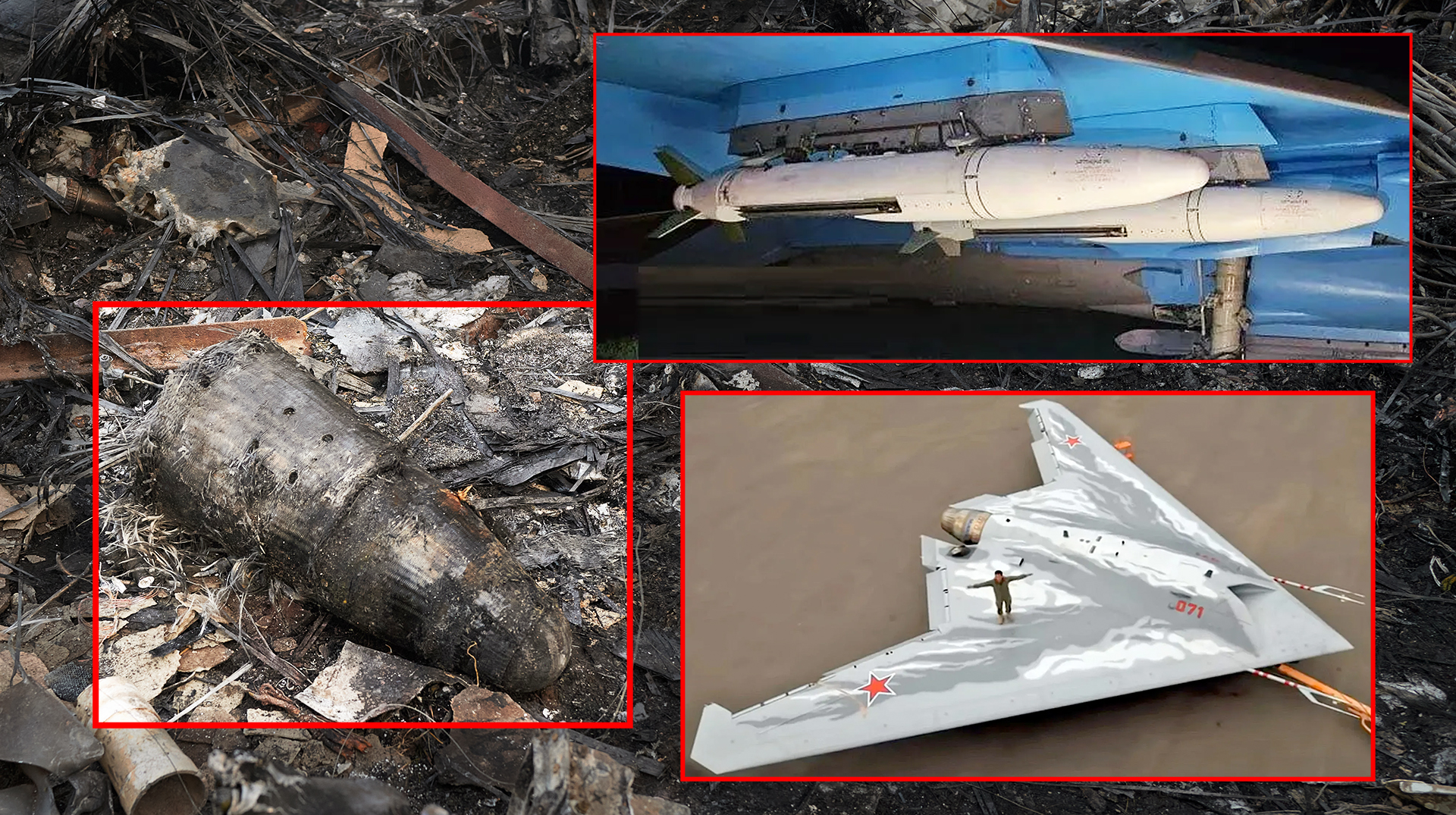Photos of the wreckage of the Russian S-70 Okhotnik-B (Hunter-B) flying wing unmanned combat air vehicle (UCAV) that was shot down by a Russian fighter in a mysterious incident over Ukraine last weekend reveal that it was carrying at least one precision-guided glide bomb. This would appear to confirm that the drone was engaged in some kind of operational trials, including prosecuting Ukrainian targets, perhaps also specifically to establish how the S-70 performs in a contested environment.
You can read our original reporting of the drone shootdown here, suffice it to say that the S-70 — possibly the fourth prototype — was brought down by a Russian fighter of unconfirmed type, which fired a short-range air-to-air missile. Video posted to social media showed the burning drone spiraling to the ground. The engagement occurred near Konstantynivka, in Donetsk, reportedly around 10 miles behind Ukrainian lines.
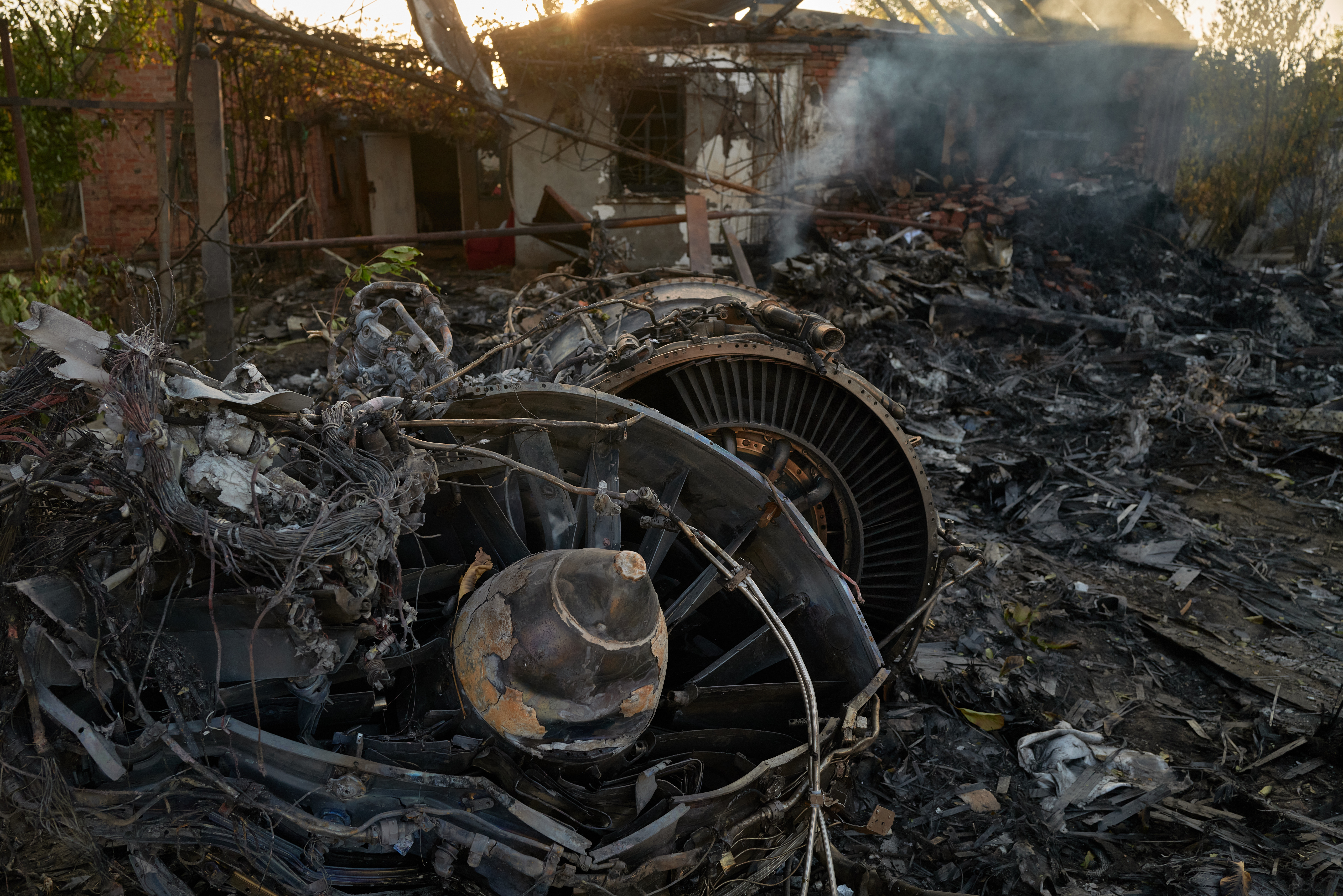
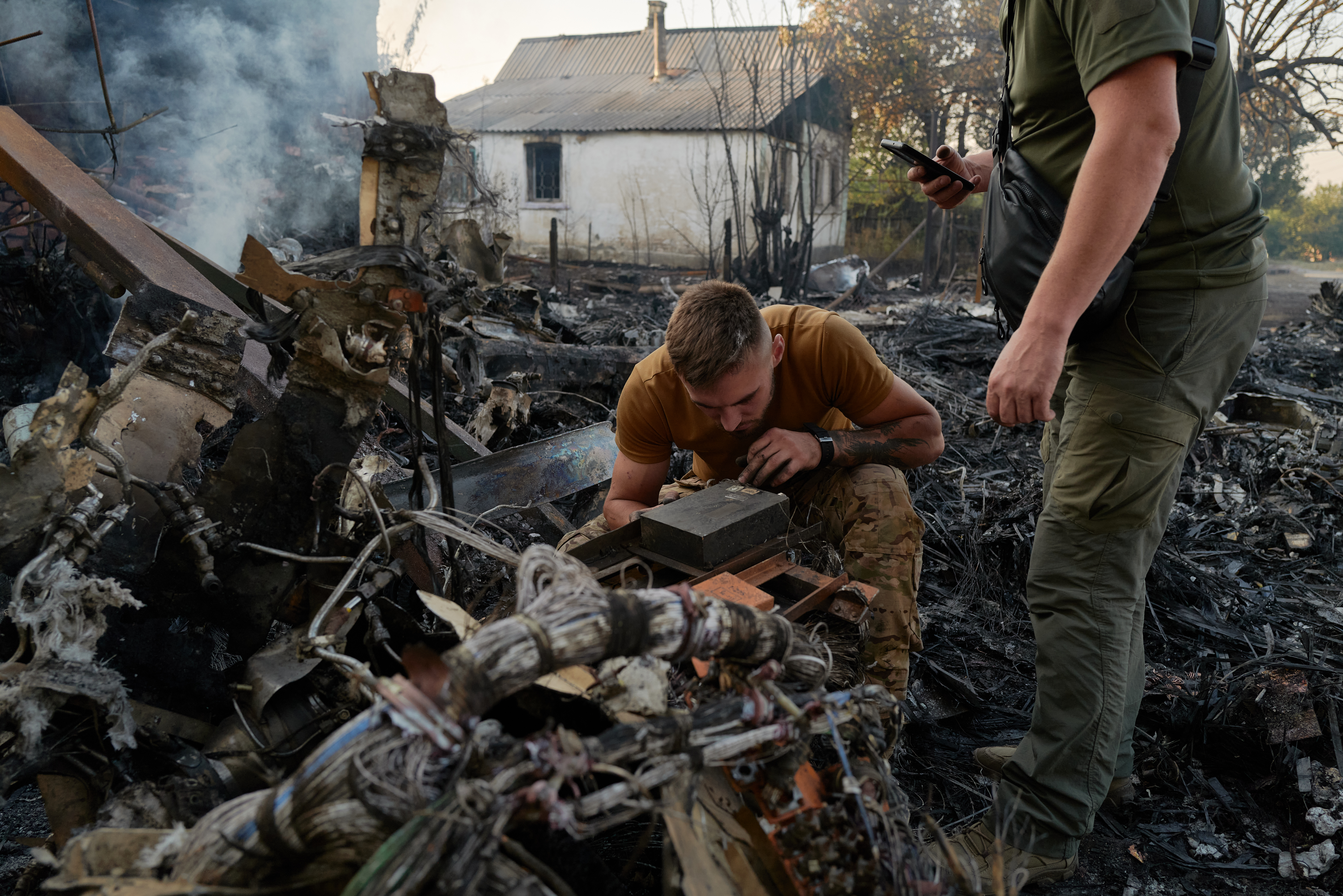
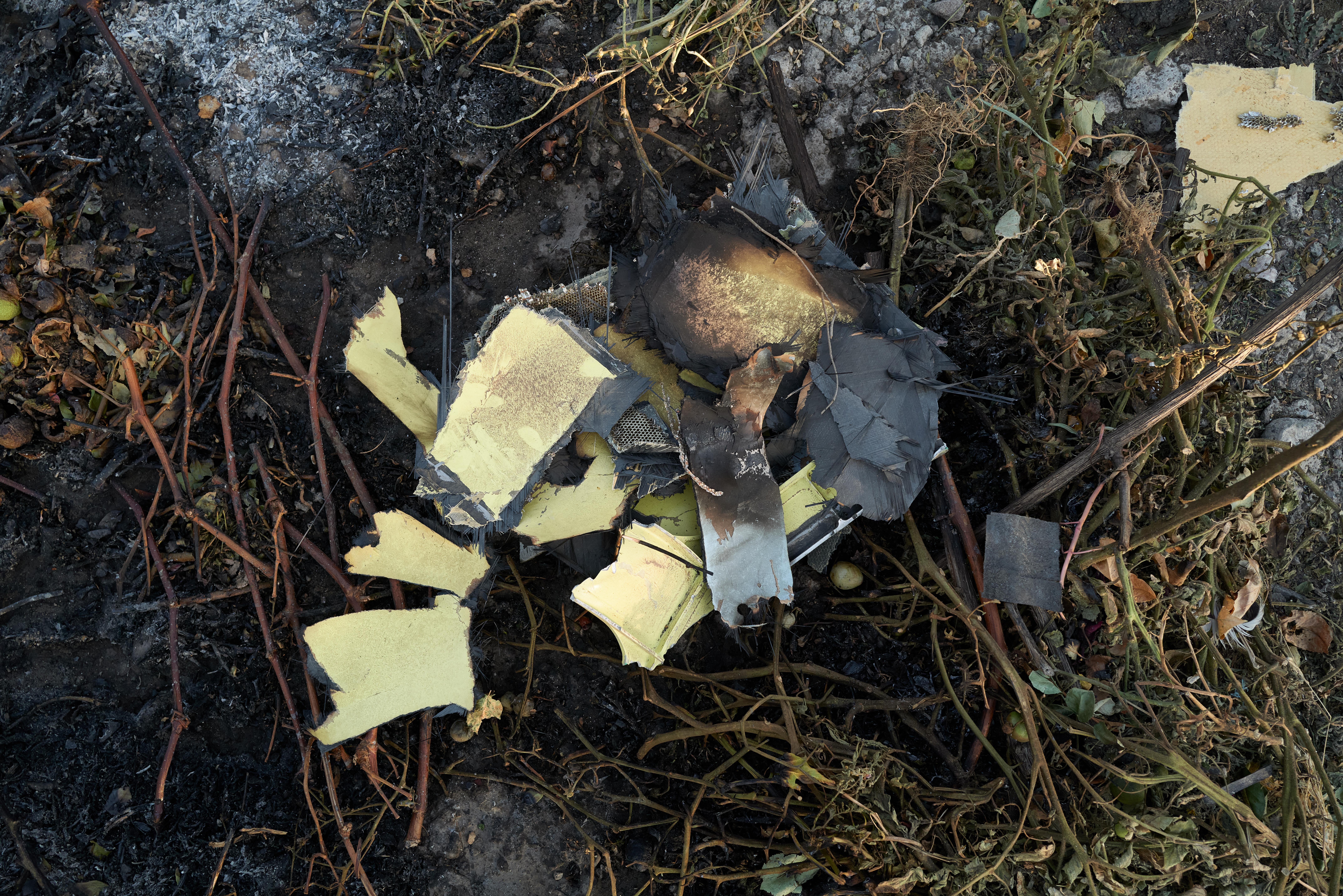
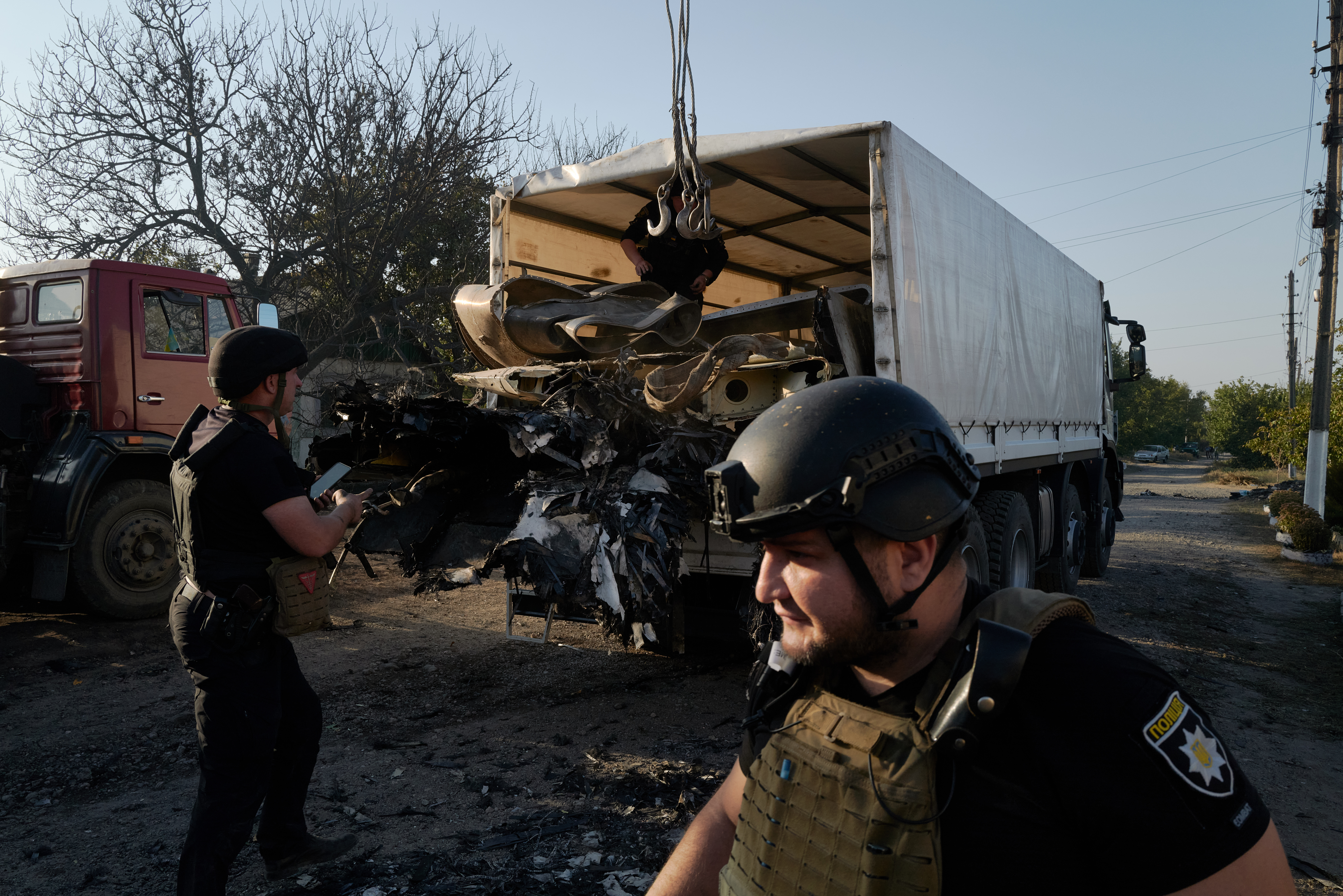
Plentiful imagery has since appeared of the S-70 crash site, which, as we previously discussed, could well be a very significant intelligence windfall.
Not included in the above series of photos, taken by a Getty Images photographer, is the fairly intact portion of one of the wings of the drone, which was seen soon after it came down. It was likely rapidly transported elsewhere for further analysis.
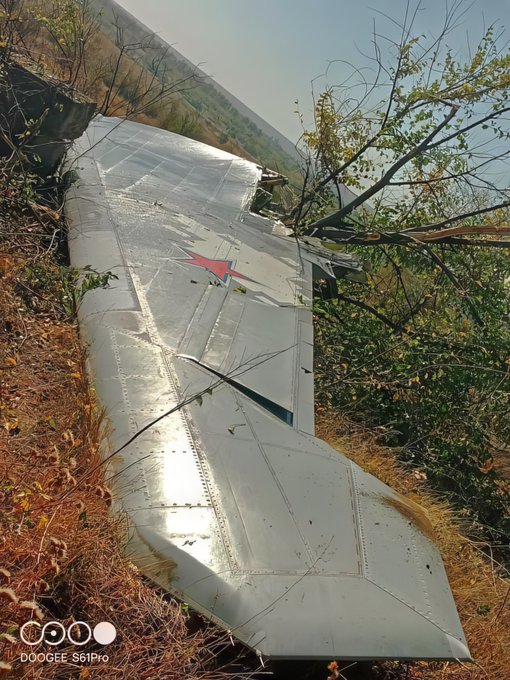
Among the twisted and burnt remains of the drone, the nose cone from at least one example of the UMPB D-30SN winged precision-guided bomb can be clearly made out. This is a weapon we have examined in depth in the past, but it wasn’t previously known to be part of the S-70’s armory. The weapon is a much more refined glide bomb compared to the previous UMPK, a fairly crude type of weapon that nonetheless has caused considerable difficulties for Ukrainian air defenses since its introduction in around early 2023.
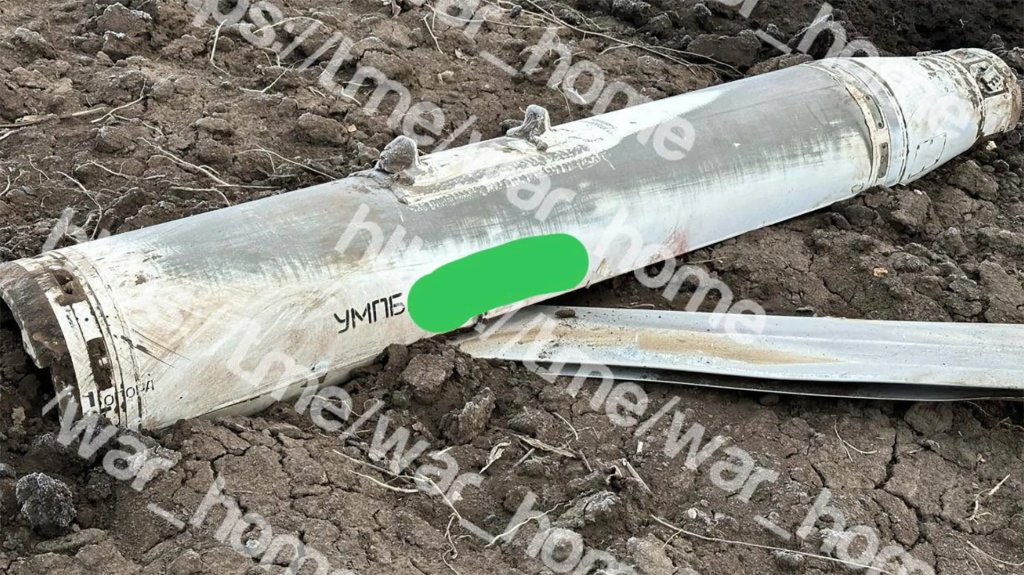
First appearing in the spring of this year, the UMPB D-30SN is closer in concept to the U.S.-made GBU-39 Small Diameter Bomb, reportedly using inertial and satellite navigation, although it’s unclear if the weapon can be programmed with a target’s coordinates after the aircraft has taken off, which would be required for the most time-sensitive targets. The range of the weapon is unknown, but it’s likely greater than that of the UMPK. That earlier weapon has been unofficially attributed with a range of 44 miles, although there are several reports that assert that the actual range is much smaller.
The S-70 is designed with some low observable (stealthy) features, including internal weapons carriage. Russia has developed a number of compressed-carriage missiles that are suitable for the internal weapons bays of the S-70, as well as the crewed Su-57 Felon fighter. Few details have been released so far concerning the particular types of weapons that the S-70 can or will carry, although there have been official statements in the past describing trials involving air-to-air missiles. On the other hand, for a drone of this class, air-to-ground munitions (as well as reconnaissance payloads) would seem more operationally realistic, at least at this stage of its development.

The UMPB D-30SN is a comparatively new weapon, likely developed in response to the demands of the war in Ukraine — specifically, the need for lower-cost standoff weapons with precision guidance.
The fact that the S-70 was loaded with at least one of these weapons also points to the likelihood that it was being used for some kind of operational trials.
The S-70 should have enough range to operate from its home base in the vicinity of the Ukrainian border, after which it could have strayed across unintentionally. But running non-combat trials of a drone loaded with weapons on Russian territory so close to the Ukrainian border seems highly unlikely. If an armed Russian drone was operating over the Ukrainian front lines, it was almost certainly intentional.

There remains a small possibility that the glide bomb could have been lobbed at the location where the drone came down to ensure that the remains of the S-70 were destroyed, although there are no reports of such airstrikes in the vicinity. Russia’s slow targeting cycles would also seem to rule that out, especially bearing in mind the question of whether the UMPB D-30SN can even have target coordinates uploaded while in flight. Meanwhile, there have been unconfirmed reports that Russia targeted the crash site with an Iskander short-range ballistic missile, which seems much more likely — and is something TWZ predicted.
We still don’t know why the drone was shot down by another Russian aircraft, but the fact that it was operating in close proximity to a crewed jet suggests it may also have been conducting some kind of trials in which it was paired with a crewed platform. The S-70 has been involved in previous non-combat ‘loyal wingman’ trials alongside the Su-57. This may also have led to the claims that it was a Su-57 that shot down the example over Ukraine.

On the other hand, the S-70 may have been exploring independent strike operations, with a fighter on hand to observe or even specifically to shoot it down in the case of a serious malfunction, including a terminal command loss. Above all, the need to potentially shoot it down may have been driven by the requirement to keep sensitive technology out of Ukrainian (and, by proxy, Western) hands. We go over these possibilities and their historical precedent in detail in our past report on the incident.
Whatever the operational status of the S-70 shot down over the weekend, the capabilities that the drone offers in the strike role would be of great interest to the Russian Aerospace Forces (VKS). Throughout the war, the VKS crewed aircraft fleet has taken heavy losses, while Ukraine’s expanding air defense capabilities have pushed tactical aircraft further away from the front lines. This situation has spurred the development and fielding of weapons like the UMPB D-30SN. Adding these munitions to an uncrewed platform with a useful range that also offers at least some low-observable characteristics is certainly one way of mitigating those threats.
However, it’s unclear how many S-70s are actually available to Russia. It seems that around four of the basic versions were completed, one of these being the victim of the shootdown, while a more refined S-70, with stealthier engine exhaust and other enhancements, has also been rolled out. Its current status is unclear. Whatever the case, the use of the S-70 in the war in Ukraine is likely to be tokenistic at best although — at least until the shootdown — its deployment there may have provided some useful test data for further development of the drone and related tactics. At the same time, the VKS needs all the strike assets it can get, which may also have prompted combat trials of the S-70, something that Russia has done before in the past, notably with the Su-57 in Syria and, according to Western intelligence assessments, in Ukraine.
While an operational test of the S-70 and its strike capabilities in a combat environment now looks like the most likely explanation for the drone’s presence over Ukraine, it does remain somewhat surprising. Exposing the low-observable drone to such a high-threat environment is one thing, but putting a crewed fighter in the same area is another, all the more so if it was one of the relatively small number of Su-57s available to the VKS. Both platforms are among the most advanced and most sensitive in terms of technology, so risking them both is unusual. Perhaps the S-70 went astray, and the decision was taken to send a fighter to bring it down, with a short-range missile being used from within visual range to ensure that it was destroyed.
Whatever happened, it’s certainly highly intriguing that an armed S-70 drone was underway over Ukraine. As well as being a very notable development in terms of the air war there, it may very well be the first known instance of an armed flying wing UCAV operating in an active conflict zone.
Contact the author: thomas@thewarzone.com
